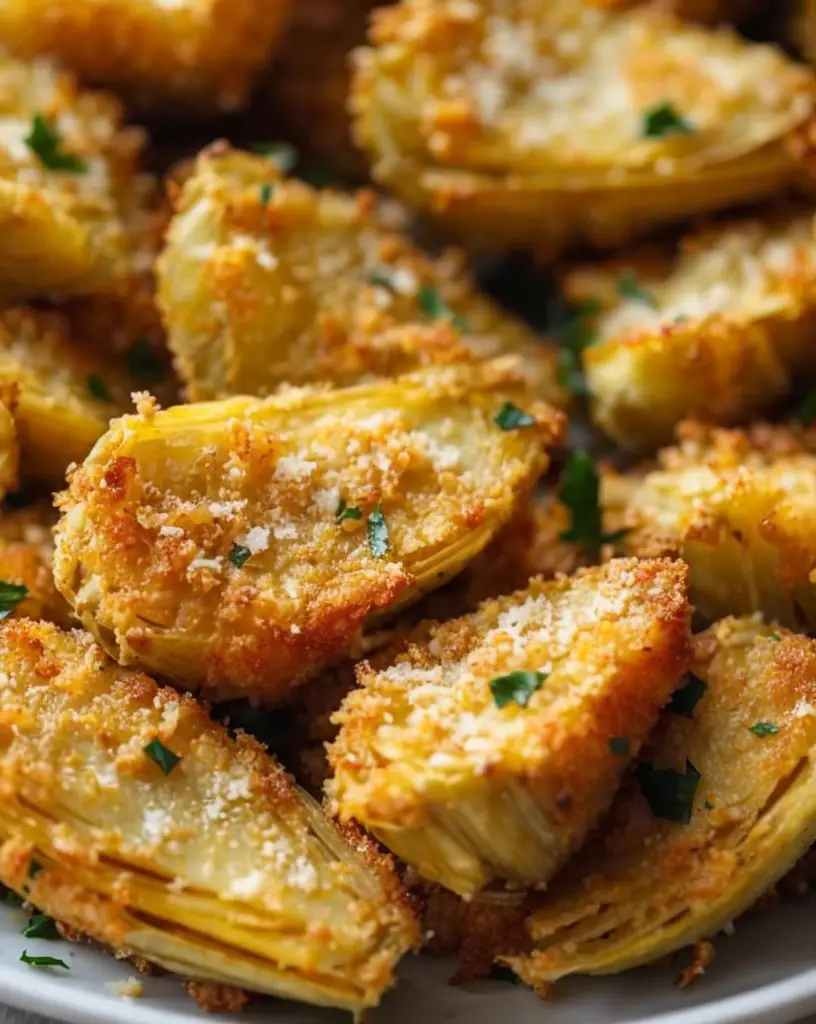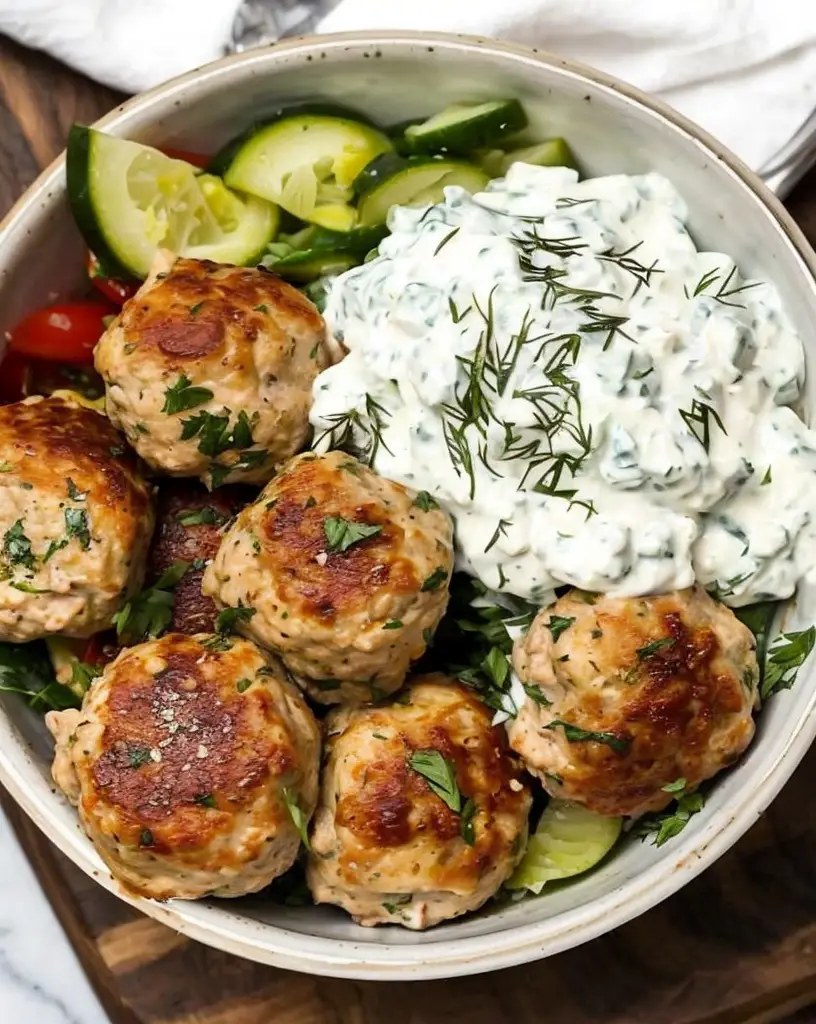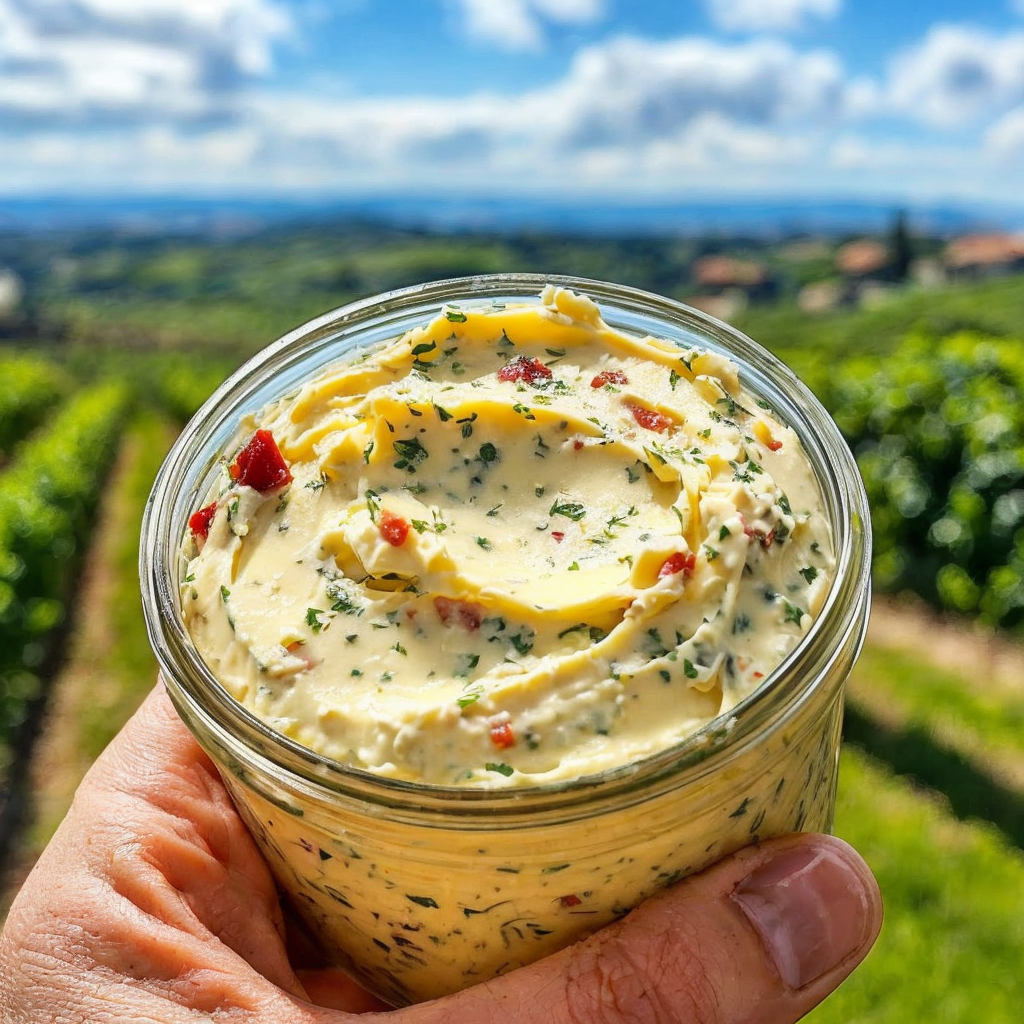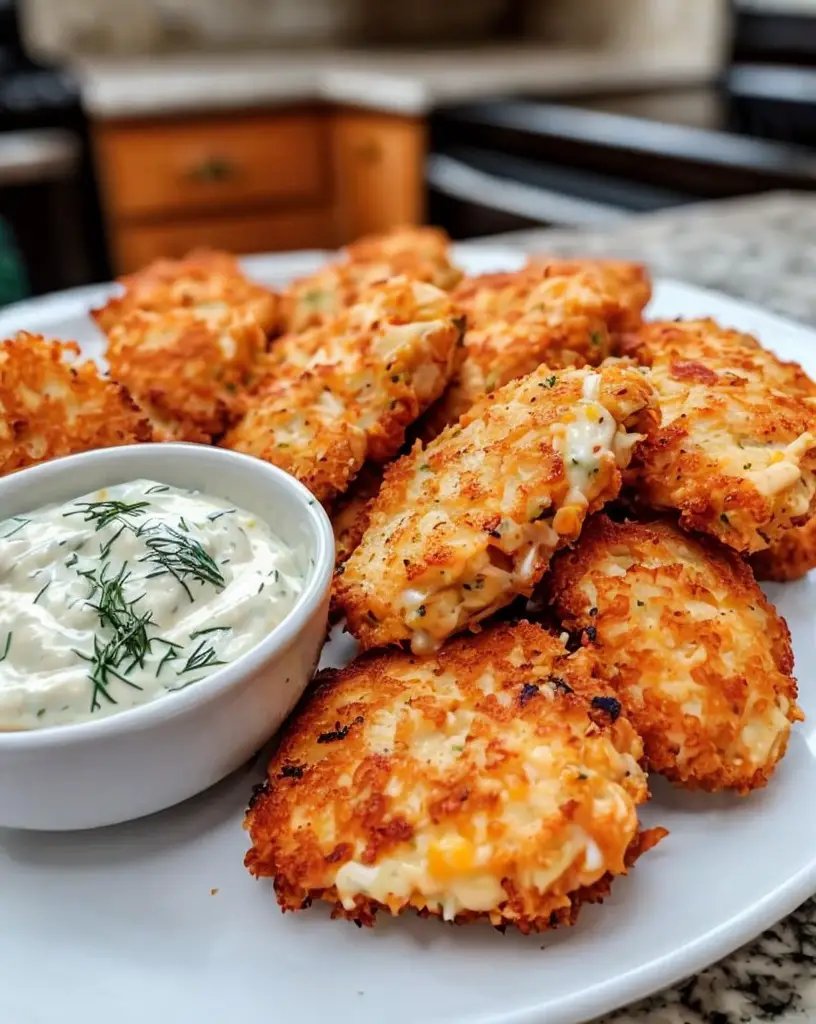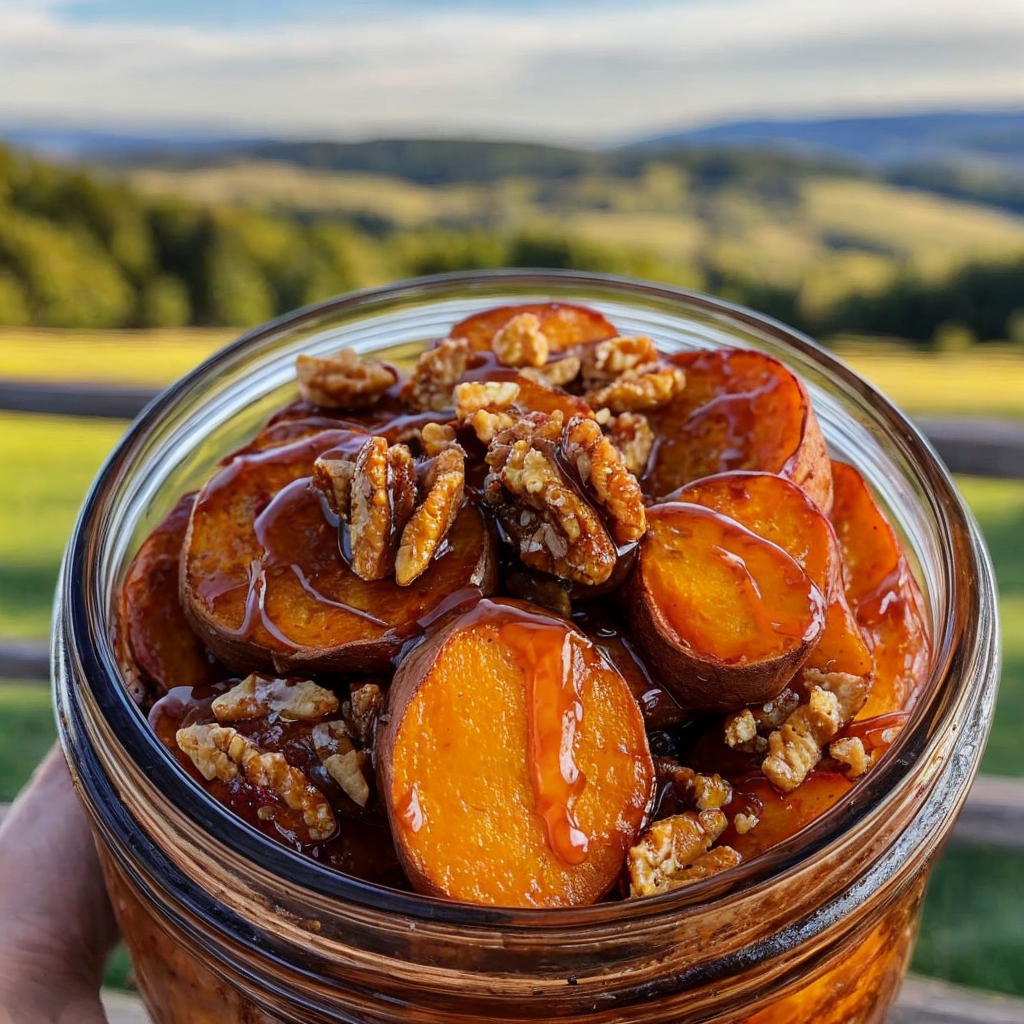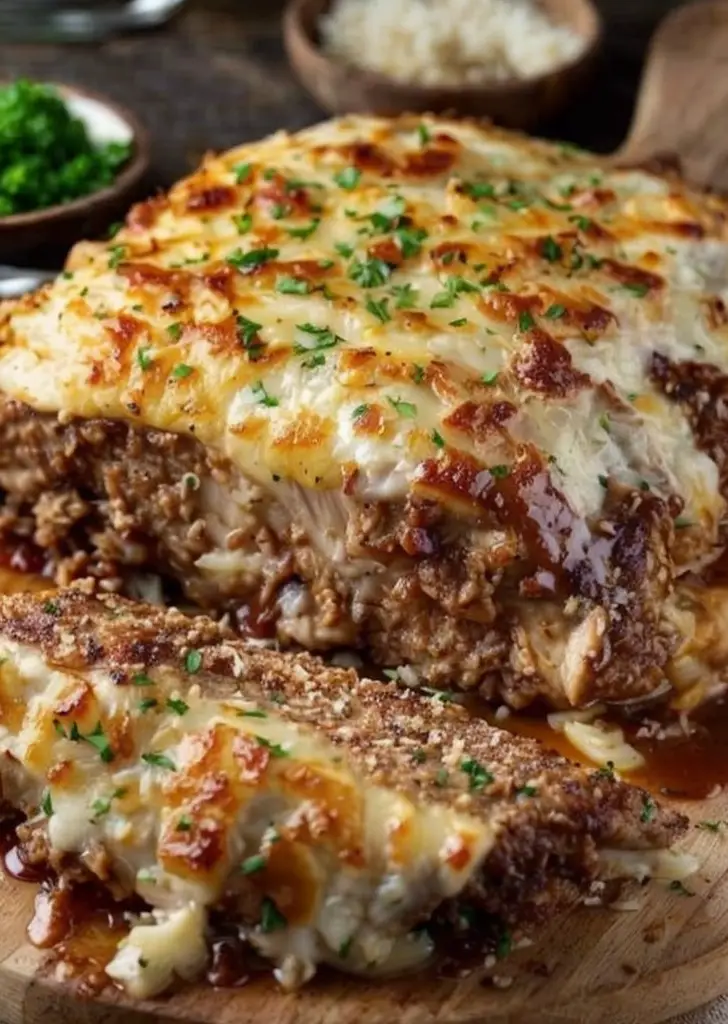Crispy Parmesan Artichoke Hearts: A Savory Delight You’ll Love
Welcome to a delightful journey through flavors with this Crispy Parmesan Artichoke Hearts recipe. This dish combines the nutty richness of Parmesan with the tender heart of the artichoke, creating a perfect appetizer or side dish that will captivate any palate. Perfectly seasoned and delightfully crispy, these artichoke hearts are a testament to simple ingredients yielding extraordinary results.
Whether you are hosting a dinner party or just want to enjoy a snack that is both wholesome and flavor-packed, this recipe is your answer. The crisp outside contrasts wonderfully with the soft, savory inside, creating a harmony of textures that’s hard to resist. Buttery, with a hint of garlic and herbs, these artichoke hearts are a versatile dish you’ll find yourself making repeatedly.
Diving into the world of artichoke hearts is not only about their flavor but also about discovering their nutritional benefits. Rich in fiber, vitamins, and antioxidants, they are an excellent choice for a health-conscious foodie. With the Parmesan adding calcium and protein, this dish offers more than just a satisfying taste—it’s also a boon for your well-being.
Quick Recipe Highlights
- Flavor Profile: The beautifully crispy Parmesan crust provides a nutty, savory punch, while the artichoke delivers a mild, earthy taste, perfectly balanced with hints of garlic and herbs.
- Texture: Experience the satisfying crunch of the outer layer, juxtaposed against the soft, tender artichoke center, a genuine textural masterpiece.
- Aroma: Let the inviting scent of baked Parmesan and herbs mingle with the subtle fragrance of artichoke, creating an aromatic symphony.
- Visual Appeal: Golden brown and inviting, with specks of green herbs, this dish is as visually appealing as it is delicious, perfect for elevating any table setting.
- Skill Level Needed: Simple and straightforward, this recipe requires basic kitchen skills, making it accessible for cooks of all levels.
- Special Equipment: No complex gadgets needed—just a baking sheet, oven, and basic prepping tools, ensuring ease of preparation.
Recipe Overview
- Difficulty Level: This recipe lands on the easier side, requiring minimal techniques and basic kitchen tools, making it an excellent choice for novice cooks or anyone short on time.
- Category: Appetizer or side dish, this recipe shines in versatile roles, perfect for starting a meal or complementing a main course.
- Cuisine: Rooted in European culinary traditions, this dish combines classic Italian ingredients with a creative twist, bringing the art of simplicity to the fore.
- Cost: Economical and accessible, the main ingredients are cost-effective, making this a budget-friendly yet gourmet option for any occasion.
- Season: Ideal year-round, but particularly satisfying in spring when artichokes are at their peak freshness.
- Occasion: Great for casual gatherings, special dinners, or holiday feasts, these artichoke hearts are a versatile addition to any menu.
Why You’ll Love This Recipe
The taste and texture make this dish an unforgettable experience. The crispy Parmesan crust enveloping the tender, earthy artichoke creates a magnificent culinary combination that satisfies both crunchy and creamy cravings. It’s a delightful snack or starter that feels indulgent yet light enough to leave room for the main course.
This recipe is a breeze to prepare, requiring minimal ingredients and effort. The straightforward prep work means you can easily whip up a batch even on a busy weeknight or as a last-minute appetizer for guests, proving that fantastic food doesn’t have to take hours in the kitchen.
Nutritionally, the combination of artichokes and Parmesan offers a feast of fiber, antioxidants, and essential nutrients. Artichokes are known for their health-boosting qualities, with benefits ranging from improved digestion to heart health, while Parmesan adds a dose of calcium and protein to your meal.
Socially, this dish is a guaranteed crowd-pleaser. The unique blend of flavors and textures is sure to start conversations and bring people together over shared appreciation for great food. Ideal for parties and gatherings, it’s a dish that encourages communal enjoyment and engagement.
From a cost perspective, this is a highly affordable yet elegant recipe. The ingredients are easily available and budget-friendly, allowing you to create a luxurious dish without breaking the bank, making it a fantastic option for frequent enjoyment.
Historical Background and Cultural Significance
The origins of artichokes trace back to the Mediterranean region, where they have been cultivated for centuries. Known for their health properties and unique taste, artichokes have long been a staple in Italian and French cuisines. This recipe is a homage to these culinary traditions, bringing a beloved ingredient into modern kitchens with a simple, flavorful twist.
Culturally, artichokes have been a symbol of good taste and class across many European societies. The addition of Parmesan cheese, hailing from Parma in Italy, further deepens the cultural ties, as this cheese is a respected hallmark of Italian cuisine, celebrated for its nutty and savory qualities.
As food trends evolved, so did the preparation methods of artichokes. This crispy variant is an evolution from traditional steaming or boiling, offering a contemporary approach that highlights different textures and flavors, catering to modern palates that appreciate contrast and crunch.
Regionally, variations of this recipe exist, incorporating local herbs or cheeses, making each rendition unique to its locale. This adaptability showcases the recipe’s versatility and the universal appeal of combining crispy and creamy elements, ensuring its continued popularity across generations.
Ingredient Deep Dive
Artichokes are more than just a tasty ingredient; they’re steeped in history and symbolism. Known for their health benefits, they have been a staple in Mediterranean diets for centuries. Packed with fiber, vitamin C, and antioxidants, they are celebrated for aiding digestion and promoting heart health. Selecting petite, firm artichokes ensures the best flavor and texture for this recipe.
The star of this dish’s crispy coating, Parmesan cheese, brings its own rich legacy. Originating from the Parma region in Italy, this cheese is renowned for its nutty flavor and granular texture. It is an excellent source of calcium and protein, complementing the artichoke’s nutrients. For best results, choose fresh Parmesan and store it in a cool, dry place to maintain its integrity and flavor.
Substituting Pecorino Romano for Parmesan introduces a sharper taste, while using panko breadcrumbs can add extra crunch to the coating. These options ensure flexibility in flavor and texture profiles, allowing for customization based on dietary preferences or availability of ingredients.
Common Mistakes to Avoid
- Skipping the pat dry step for artichokes can result in a soggy coating. Ensure they are thoroughly dried for maximum crispiness.
- Overcrowding the baking sheet is a common mistake that leads to uneven cooking. Leave plenty of space between each piece for optimal results.
- Undercooking the artichokes may leave them tough; follow the recommended temperature and time for best results.
- Using pre-grated Parmesan cheese can affect the flavor and texture negatively. Opt for freshly grated for a superior taste.
- Not preheating the oven might lead to uneven cooking, so ensure it’s fully preheated before baking.
- Ignoring seasoning can lead to a bland dish. This recipe thrives on the balance of spices and cheese, so season generously.
- If substituting ingredients, ensure compatibility with flavors to maintain the dish’s balance and appeal.
- Avoid reheating in the microwave as this impacts the texture; opt for an oven or air fryer to maintain crispiness.
Essential Techniques
The pat dry technique for artichokes is crucial to ensure that the coating adheres properly and crisps up in the oven. Use paper towels to gently but thoroughly dry the artichokes after draining, which helps prevent the dreaded soggy crust.
Properly preheating the oven is essential for achieving the perfect golden brown crisp. A well-heated oven ensures even cooking, making sure the Parmesan crisps up nicely around the artichoke hearts.
Mastery of seasoning balance is key in this dish. The right amount of garlic powder, salt, and pepper enhances the natural flavors without overpowering the subtle artichoke taste.
Understanding visual cues for doneness, such as a golden brown color and audible sizzling, can guide you to know when the artichokes are perfectly cooked, creating a satisfying crunch with each bite.
Pro Tips for Perfect Crispy Parmesan Artichoke Hearts
Enhance the flavor by adding a pinch of red pepper flakes to the coating mix for a bit of heat that complements the cheesy crust beautifully.
Experiment with different cheese blends, such as adding grated Asiago for a punchier flavor alongside the Parmesan.
To maintain the crisp texture, serve immediately after baking. If you’re preparing in advance, reheat briefly in the oven to restore perfect crispiness.
For a richer flavor, lightly drizzle truffle oil over the artichokes after baking, adding an earthy, luxurious note to the dish.
To ensure even coating, use your hands to press the Parmesan mixture into each artichoke heart firmly, ensuring it sticks well before baking.
Consider pairing with a lemon aioli dip for an additional flavor layer, enhancing the savory aspects of the dish with tangy, creamy goodness.
Variations and Adaptations
Create a Mediterranean-inspired version by incorporating dried oregano and basil into the breadcrumb mixture, bringing a herby aroma that complements the Parmesan beautifully.
Adapt the recipe for winter by adding a touch of rosemary and thyme for an earthy, hearty take that pairs well with cozy, colder days.
For a vegan alternative, use nutritional yeast instead of Parmesan and flaxseed meal or aquafaba as a binder, ensuring the same crispy texture and robust flavor without dairy.
Add a pop of flavor without changing the core recipe by sprinkling lemon zest into the Parmesan mix, providing a fresh citrus note that enhances each bite beautifully.
Play with presentation by stacking artichoke hearts on skewers for a fun, party-friendly dish that offers visual appeal without compromising taste or texture.
Serving and Presentation Guide
For an elegant serving presentation, arrange the crispy artichokes in a circular pattern on a white plate, garnished with fresh parsley for a pop of color against the golden brown crust.
Consider garnishing with lemon wedges or fresh basil leaves, adding an aromatic and visual flourish that invites diners to indulge.
Pair with a light salad using mixed greens, cherry tomatoes, and a simple vinaigrette to balance the richness of the artichokes with refreshing flavors.
Traditionally served hot to maintain crispness, they can also be enjoyed at room temperature, making them versatile for buffet-style or casual settings.
For portion control, consider serving in small ramekins or on individual appetizer plates, allowing each guest to savor their own share without overindulging.
Wine and Beverage Pairing
Pairing this dish with a crisp white wine such as Sauvignon Blanc or a light-bodied Chardonnay will highlight the nutty Parmesan and delicate artichoke flavor, enhancing the overall experience.
Non-alcoholic options like sparkling water with a slice of lemon or apple cider provide refreshing contrasts, maintaining the palate’s brightness with each bite.
For a comforting alternative, serve with a light green tea or herbal tea blend that complements the dish’s savory elements without overwhelming the taste profile.
Consider the temperature of beverages to ensure they refresh the palate; chilled wines or cool teas are ideal alongside warm, crispy artichokes.
Serve the beverages in appropriate glasses, enhancing the dining ambiance and allowing diners to experience the pairing fully.
Storage and Shelf Life
To store these crispy treats, place them in an airtight container lined with paper towels to absorb excess moisture, extending their shelf life in the refrigerator for up to three days.
Keep at a stable temperature to ensure they remain fresh and avoid placing near odorous foods that might impact flavor absorption.
For preservation, consider freezing the artichokes before baking. When you’re ready to serve, thaw them in the refrigerator and bake to enjoy the same crispness.
Watch for signs of spoilage, such as off-odors or growing mold, indicating they are no longer safe to eat.
When reheating, use an oven set to around 350°F for best results, restoring that delightful crispiness without making them chewy.
Make Ahead Strategies
Prepare the artichoke hearts up to a day in advance by cleaning and seasoning them, storing them in the refrigerator until you’re ready to coat and bake.
Prepare the Parmesan mixture ahead of time and store in an airtight container, allowing you to save time during meal prep and ensuring consistent flavors.
Consider baking a test batch a day before serving to perfect timing and flavor adjustments, improving confidence and satisfaction with the final dish.
Reheat in the oven briefly on serving day to melt the cheese and restore crispness, offering an easy make-ahead solution that doesn’t compromise quality.
Freshen up with a sprinkle of fresh herbs or a drizzle of olive oil before serving, ensuring vibrant flavors and textures for your guests.
Scaling Instructions
For a smaller yield, halve the recipe using precise measurements for seasoning and cheese, ensuring the flavors remain well-balanced and the coating is sufficiently crispy.
To cater to a larger group, double or triple the ingredient quantities while maintaining cooking techniques and adjusting oven time based on increased batches.
For larger batches, consider using multiple baking sheets and rotating them in the oven to ensure even baking and consistency across all artichoke pieces.
Store any unused ingredients appropriately to extend their usability for future recipes, ensuring nothing goes to waste and maximizing your budget.
With large batches, consider serving in stages to maintain optimal temperature and freshness, allowing each serving to be enjoyed piping hot.
Nutritional Deep Dive
Each serving of Crispy Parmesan Artichoke Hearts offers a balanced macro breakdown, with carbohydrates from breading, protein from cheese, and healthy fats, creating a nutrient-dense dish that satisfies hunger.
Artichokes provide an excellent source of fiber, aiding in digestion and promoting satiety, with low calorie content supporting weight-management goals.
Parmesan cheese offers high levels of calcium and protein, contributing to bone health and muscle maintenance, while its rich flavor adds significant taste without requiring large quantities.
The dish holds antioxidant properties, thanks to the artichokes, which are linked to a range of health benefits, from reducing inflammation to supporting liver function.
For conscious portion control, enjoy as part of a balanced meal rather than a standalone snack, ensuring nutritional needs are met without excess intake.
Dietary Adaptations
For a gluten-free version, replace breadcrumbs with gluten-free panko or almond flour, maintaining texture and flavor while accommodating dietary restrictions.
To create a dairy-free alternative, employ nutritional yeast in place of Parmesan and use dairy-free butter or olive oil to support the coating process.
Vegans can replace Parmesan with a mix of ground nuts and nutritional yeast for a similar nutty flavor, ensuring an inclusive approach without sacrificing taste.
For a low-carb/keto option, consider using crushed pork rinds or a nut-based crumb topping, maximizing the recipe’s appeal across various dietary landscapes.
Paleo followers can enjoy this dish with slight modifications, such as using arrowroot flour and coconut oil, ensuring adherence to dietary guidelines without losing flavor.
Troubleshooting Guide
- If the coating isn’t sticking, ensure artichokes are thoroughly dried and you’ve firmly pressed the Parmesan mixture onto them before baking.
- For flavor imbalances, adjust with additional seasonings like lemon zest or fresh herbs to enhance the taste without overpowering the artichoke’s natural flavor.
- To address temperature issues, preheat your oven completely before introducing the artichokes to ensure they cook evenly to the desired crispness.
- If you’re facing equipment challenges, remember, alternate methods like air frying can also yield crispy results, offering flexibility in cooking styles.
- Ingredient substitutions such as alternative crumbs require adjustments in seasoning balance to maintain flavor intensity and crispiness.
- Pay attention to timing concerns by using a timer and checking visual cues, like toastiness, to prevent under or overcooking the artichokes.
Recipe Success Stories
Our community of readers can’t get enough of these delectable, Crispy Parmesan Artichoke Hearts! Janet from Texas shared her variation of using gluten-free breadcrumbs, bringing a smile to her gluten-sensitive guests’ faces as they enjoyed each crispy bite.
Adapting for a keto diet, Mark from Ohio substituted almond flour for breadcrumbs, finding it added a delightful nuttiness that paired beautifully with the artichokes, providing a luxurious snack experience.
Frances in California recommended serving these artichoke hearts at her last holiday gathering, where they were a hit amongst both adults and kids, making for memorable culinary conversation starters.
Readers have experimented with various photography tips, capturing the artichokes’ beautiful golden crust and sharing their images across social media platforms, sparking inspiration for fellow home cooks.
Suggestions pour in for creative uses of leftover artichokes, from creating artichoke quiche to adding them to salads, showcasing the versatility and community enthusiasm for making the most of this recipe.
Frequently Asked Questions
How do I ensure the artichoke hearts remain crispy?
To maintain crispness, serve the artichokes immediately after baking. If reheating, use an oven or air fryer instead of a microwave to avoid sogginess.
Can I prepare these artichoke hearts in advance?
Yes, you can prepare them up to a day in advance by seasoning and storing them; coat and bake right before serving for best results.
Are there substitute options for Parmesan cheese?
Pecorino Romano offers a sharper, similar taste, while nutritional yeast is a great alternative for vegan diets.
How should I store leftovers?
Store in an airtight container lined with paper towels to absorb moisture, keeping them fresh in the refrigerator for 2-3 days.
Is there an alternative cooking method?
Yes, an air fryer can provide similar crispiness with less oil, cooking them at 375°F for about 15 minutes.
What wine pairs best with this dish?
A crisp Sauvignon Blanc or a light-bodied Chardonnay complements the nutty, savory flavors of the Parmesan.
Can I use canned artichokes?
While fresh artichokes offer the best texture, canned artichokes can be used if thoroughly dried to ensure the coating adheres properly.
How do I prevent the crumbs from falling off?
Ensure artichokes are properly dried and press the coating firmly onto them; refrigerating before baking helps adherence.
Are these artichokes freezer-friendly?
You’re better off freezing them before baking. Thaw in the fridge and bake when ready to enjoy optimum texture.
What can I serve with these artichokes?
A lemon aioli or a light yogurt-based dip complements their flavors, adding a refreshing contrast to this savory dish.
Additional Resources
Explore related recipes like our Roasted Garlic Aioli, perfect for dipping these artichokes as well as our other crisp vegetable sides that provide similar satisfaction and balance.
Utilize our technique guides to master crispy coatings and seamless baking methods, ensuring consistent results across various recipes.
Discover ingredient information that delves into the benefits and selection tips for artichokes, helping you make informed choices at the market.
Consider our equipment recommendations for baking essentials, enhancing efficiency and ease in the kitchen without unnecessary clutter.
Adapt recipes with seasonal variations for creativity and freshness whatever the time of year, ensuring robust flavors remain in focus.
Join the Conversation
Share your Crispy Parmesan Artichoke Hearts creations on social media, using our dedicated hashtag to join a community of enthusiastic cooks sharing their takes on this delightful dish.
Engage by reviewing the recipe and offering your unique insights, fostering a space where fellow readers can learn, adapt, and share experiences.
Participate by submitting your photography tips for capturing the dish’s golden crunchy allure, providing inspiration and encouragement for all food lovers.
Join in our community discussions around the myriad variations of this recipe and other artichoke-based dishes, contributing to a growing repository of culinary creativity.
Connect with other readers to share your adaptations and come up with new ideas to further enhance this timeless recipe, embracing the art of communal cooking and sharing.
The Recipe
Crispy Parmesan Artichoke Hearts
Serves: 4
Prep Time: 15 mins
Cook Time: 20 mins
Total Time: 35 mins
Kitchen Equipment Needed
- Baking sheet
- Parchment paper
- Mixing bowls
- Grater
- Oven
Ingredients
- 1 can (14 oz) artichoke hearts, drained and patted dry
- 1 cup freshly grated Parmesan cheese
- 1 cup panko breadcrumbs
- 1 teaspoon garlic powder
- Salt and pepper to taste
- 2 tablespoons olive oil
- 1 tablespoon chopped fresh parsley, for garnish
Directions
- Preheat your oven to 400°F (200°C) and line a baking sheet with parchment paper.
- In a bowl, combine the Parmesan, breadcrumbs, garlic powder, salt, and pepper.
- Dip each artichoke heart in olive oil, then roll in the Parmesan mixture until evenly coated.
- Place the coated artichokes on the prepared baking sheet, ensuring they are not touching.
- Bake for 20 minutes or until the coating is golden brown and crispy.
- Remove from the oven, transfer to a serving platter, and garnish with chopped parsley.
Recipe Notes
- For extra flavor, add a pinch of red pepper flakes to the Parmesan mixture.
- Store leftovers in an airtight container in the fridge for up to 3 days.
- Reheat in the oven to restore crispiness; avoid microwaving as it may soften the coating.
